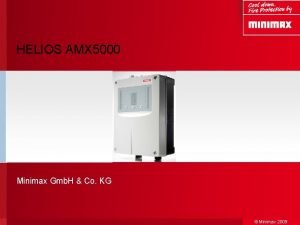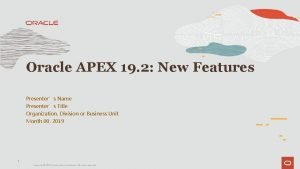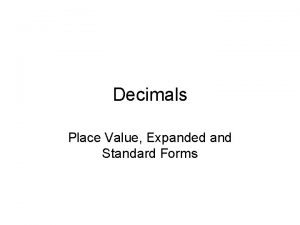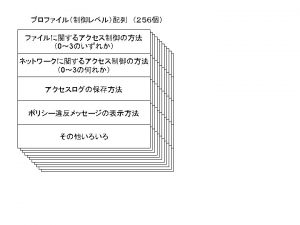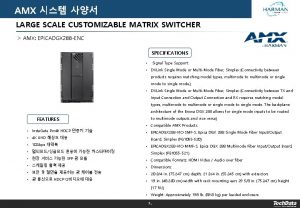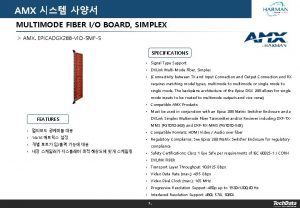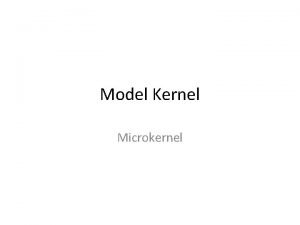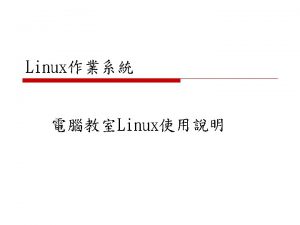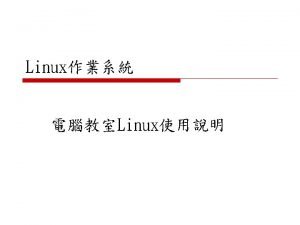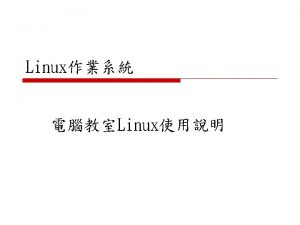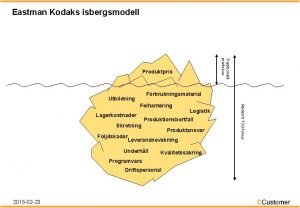Kernel Expanded version of Kodaks AMX kernel Features















- Slides: 15

Kernel • Expanded version of Kodak’s AMX kernel • Features – Uses Preemptive Priority Scheduling – Multithreading – Multitasking

Final Report: Palm OS Thad Cox Gerald Irish Duo Lei Chip Seymour

Typical architecture layers of a PDA

Palm OS Specs • CPU speed ranges from 16 MHz to 33 MHz • Random Access Memory (RAM) ranges from 128 k to 8 MB • Dynamic heap ranges from 32 K to 256 K

Devices • • • Handspring Hand. Era Sony Palm Inc. Kyocera/QUALCOMM Symbol Technologies

Palm OS 5. 0 - Multimedia • support for high-resolution 320 x 320 pixel screens -four times the resolution of most current generation products • high-fidelity sound recording and playback

Palm OS 5. 0 - Wireless Connectivity • support for Bluetooth and 802. 11 b wireless networking standards • capable of connecting and communicating with networks and other devices like never before

Palm OS 5. 0 - Security & Compatibility • 128 -bit data encryption based on the RC 4 algorithm and Secure Socket Layer (SSL) support for Internet email, web browsing, and commercial transactions. • backwardly compatible with most existing Palm OS applications

Palm Handheld and Issues concerning Software Applications • • Screen Size Quick Turnaround expected PC Connectivity Input Method Power Memory Backward Compatibility

Continue… • Programming Concepts 1. 2. 3. 4. Pilot. Main Event Loop Predefined UI and Custom define UI Managers

Memory • Broken into three Heaps – Dynamic – Storage – ROM • Each heap (except ROM) – Header – Master Pointer Table – Chunks – Terminator

Memory Cont. • Dynamic Heap is Palm’s RAM – global variables and data objects, user interface components, buffers, application data, and an application stack – variable size chunks are allocated – two types, movable, and unmovable • Movable memory is referenced by ‘handles’ • handles reference master pointers which point to the beginning of each memory chunk • handles must be locked before memory access • a lock counter keeps track of how many locks are on a particular chunk. Chunks can only move when locks = 0

Memory • Compaction – compaction is automatically performed whenever there is not enough memory for an allocation • the OS does not keep track of when it performed last compaction • if after compaction the memory allocation fails again, the system will continue to try which may lead to a system crash

Memory Cont. • Storage Heap – where user data and applications reside – data is divided into records in either a resource or record database, logical constructs – multiple databases within memory – records can be accessed by index or searched by one of its attribute fields – each record must be <64 K, thus applications should be <64 K, however Palm OS supports segmenting

Conclusion • Palm’s success comes from its minimalism • solutions to design constraints are sometimes suboptimal from a logical standpoint but work well given the application • future releases will gain some of the capabilities of desktop machines as PDA hardware advances
 Amx 5000
Amx 5000 Non operating income on income statement
Non operating income on income statement Oracle apex 19 new features
Oracle apex 19 new features Chloroethene lewis structure
Chloroethene lewis structure Eps expanded
Eps expanded Expanded noun.phrase
Expanded noun.phrase Suse expanded support
Suse expanded support 306 in expanded form
306 in expanded form Fdp expanded clearinghouse
Fdp expanded clearinghouse 574 in expanded form
574 in expanded form Study jams expanded form
Study jams expanded form Business accounting chapter 2
Business accounting chapter 2 Expanded accounting equation
Expanded accounting equation Expanded noun phrases examples
Expanded noun phrases examples Whats an expanded noun phrase
Whats an expanded noun phrase 702 001 in expanded form
702 001 in expanded form
